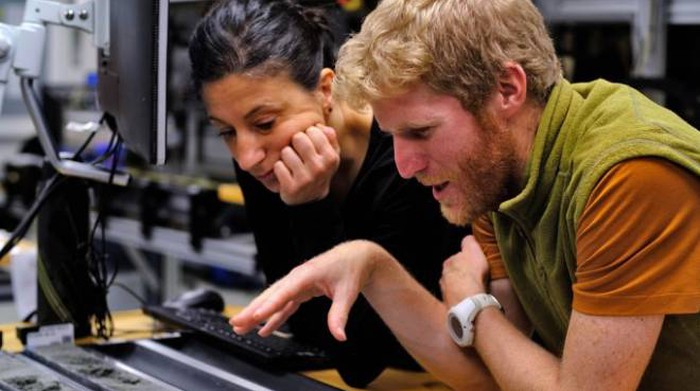
From New Zealand discover the relationship between muddy materials and earthquakes

Pisa, May 3, 2021 – I clay materials From faults in subduction zones, i.e. where a tectonic plate slides under another plate, it retains a “water barrier” within it, meaning it favors earthquakes that are likely to cause tsunamis. This is the result of the study “Fluid pressure and seismic propagation in the Hikurangi subduction zone”, carried out thanks to a collaboration between the National Institute of Geophysics and Volcanology, the Universities of Pisa and Padua and University College London on some samples from the Hikurangi region of New Zealand. The work was published by Nature Communications.
Stefano Aretusini, an INGV researcher and first author of the study, explains, “Seismic slip that occurs in shallow crustal depths can lead to tsunamis and earthquakes. Due to experimental difficulties in deforming materials in these areas, the physical processes that reduce thrust resistance that The researcher continues analyzing the behavior of samples taken in the Hikurangi subduction zone in the laboratory, “We discovered that the existing mud tends to have a low resistance to seismic forces due to the pressure of the water that holds it inside.”
To study the behavior of these clays from the rift, researchers conducted experiments On the numerous samples collected during the international drilling campaign “Integrated Ocean Drilling Program 375” carried out in 2018 off the North Island of New Zealand, which was attended by Professor Francesca Menegini of the University of Pisa, second author of the published work. In detail, the rock samples inside the rift were shattered.
The powders were tested in the INGV’s High Pressure and High Temperature (HP-HT) laboratory with a state-of-the-art apparatus, SHIVA (slow to high speed apparatus) funded by the European Research Council in a project by Giulio de Toro, of the University of Padua and co-author of this study, and reproduces the “engine” of earthquakes (the fault) allowing us to observe what is happening inside the Earth’s crust and the deformations experienced by the rocks under very intense pressures. Within SHIVA, the powders were analyzed by a new method that allowed water to be retained within them as they deformed at velocities typical of earthquakes.
Through control tests conducted on a material whose properties are known, Carrara marble powder, the researchers came to the conclusion that this clay prefers fault seismic flow due to its ability to hold water, a property that makes it ‘weaker’. When I decided to take part in the oceanographic expedition – says Francesca Menegini – I immediately called my colleagues from INGV and from the University of Padua, with whom I had been collaborating for years, and I am sure it was a unique opportunity to test the new technology developed at the Institute and make an additional contribution. to our knowledge of seismic phenomena. “The subsequent developments of this research – Stefano Aritosini concludes – will be to analyze in the same way also other types of material sampled during the mission to try to understand which of them might favor the seismic shaking process once it reaches the subduction zone.”
A.m
© All Rights Reserved

“Reader. Travel maven. Student. Passionate tv junkie. Internet ninja. Twitter advocate. Web nerd. Bacon buff.”
